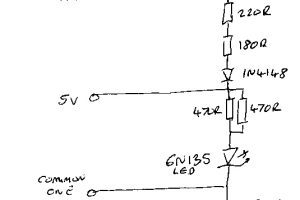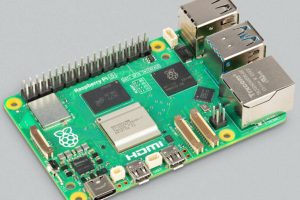Leds revolutionised bicycle lights long before they even started to appear in exterior car lighting. There were lots of quite reasonable led-based headlamps for bikes… … and then it went mad… …as powerful leds appeared and allowed small companies with cnc equipment but no optical design expertise to produce cycle lights as bright as car headlights with uncontrolled beams that ...
Muting transistors (and hunt for MM4052 data)
First, an apology: This blog has been inactive for a while because covid reared its head again, and this time ‘brain fog’ was a feature, which led to getting nothing much done for a month or so…. Now the brain is back to some extent, I noticed a whole genre of transistor that I was ignorant of, and it seems ...
Updated: DB’s alternative isolated pwm interface
An idea in an earlier blog is to make a pwm interface that can accept 5, 12 and 24V pulse streams. That one uses a bunch of resistors and has three separate inputs. Below that, wise commenter DB suggested a different approach, using a constant current sink: Update: In a previous version of this blog, I made a mess of ...
PWM-locked-loop seems to work this time (in LTspice, at least)
I have had an on-going mission to design a universal-ish pcb that will convert a PWM waveform at one frequency into to another frequency while retaining the mark-space ratio. The obvious answer is a single few-pin microcontroller, and this is clearly possible, but getting it to work at the edge-cases is non-trivial if good resolution is the aim – to ...
Universal(ish) Arduino grbl opto-coupler interface also works with logic-level pwm
In adding an alternative cutter drive motor (‘spindle’) to an existing cnc machine, an electrically isolated pwm to analogue converter is needed. The machine uses a ‘grbl’ controller, which has an Arduino-based circuit that includes multiple outputs, including a powerful 24V pwm signal that is generally used to drive a 60-80W spindle motor. Update: See a constant current approach to ...
Excellent app-note on ‘817’ opto-couplers
Würth Elektronik has released a detailed and thoughtful app note on using opto-couplers, particularly ‘817’ types. AN0007a* ‘Understanding phototransistor optocouplers’ goes deep into analogue and digital uses, covering performance variations due to process, temperature voltage, current and parasitics, and appropriate design behaviour. “An essential aspect for the development of robust applications involving optocouplers is not only to understand and integrate ...
Hands on with a Raspberry Pi 5
I use a Raspberry Pi 4 (4G) as a desk top computer almost every day, and it is excellent. Early on, to put an end to annoying pauses in response, I changed from MicroSD card boot to SSD boot via one of the USB 3 ports, and this mostly cured the mini delays. Occasional tiny delays are still present, but ...
Maybe frivolous AI use should be banned?
Crypto currency, NFTs and other blockchain activities are bad enough, with richer folk drinking deeply of the world’s energy supply for their own convenience, and now it looks like the increasing use of AI is going to let everyone with a phone join the squander. The problem is that activities like ‘researching’ the internet with large language models takes a ...
Brilliant app note on microswitches
Omron has an excellent application note on mechanical microswitches, subtitled: ‘Let’s prolong switch life by preventing failures!‘ Hundreds of photos back up information on the causes of failure and techniques for preventing those failures. It is the sort of detail that makes the heart sing*, in a world dominated by ‘marketing-led’ information-deprived drivel. Hats off to Omron *spot the lover ...
Having a go at an MCU-to-fan interface circuit
I was pondering possible interfaces between a microcontroller and a 12 or 24V 5015 blower fan. The challenge is that the MCU can only drive 3.3 or 5V, while the blower needs needs a voltage as low as ~3V (below which it will not spin anyway) and as high as 12 or 24V. A simple op-amp, and pnp transistor or p-channel ...
 Electronics Weekly Electronics Design & Components Tech News
Electronics Weekly Electronics Design & Components Tech News









